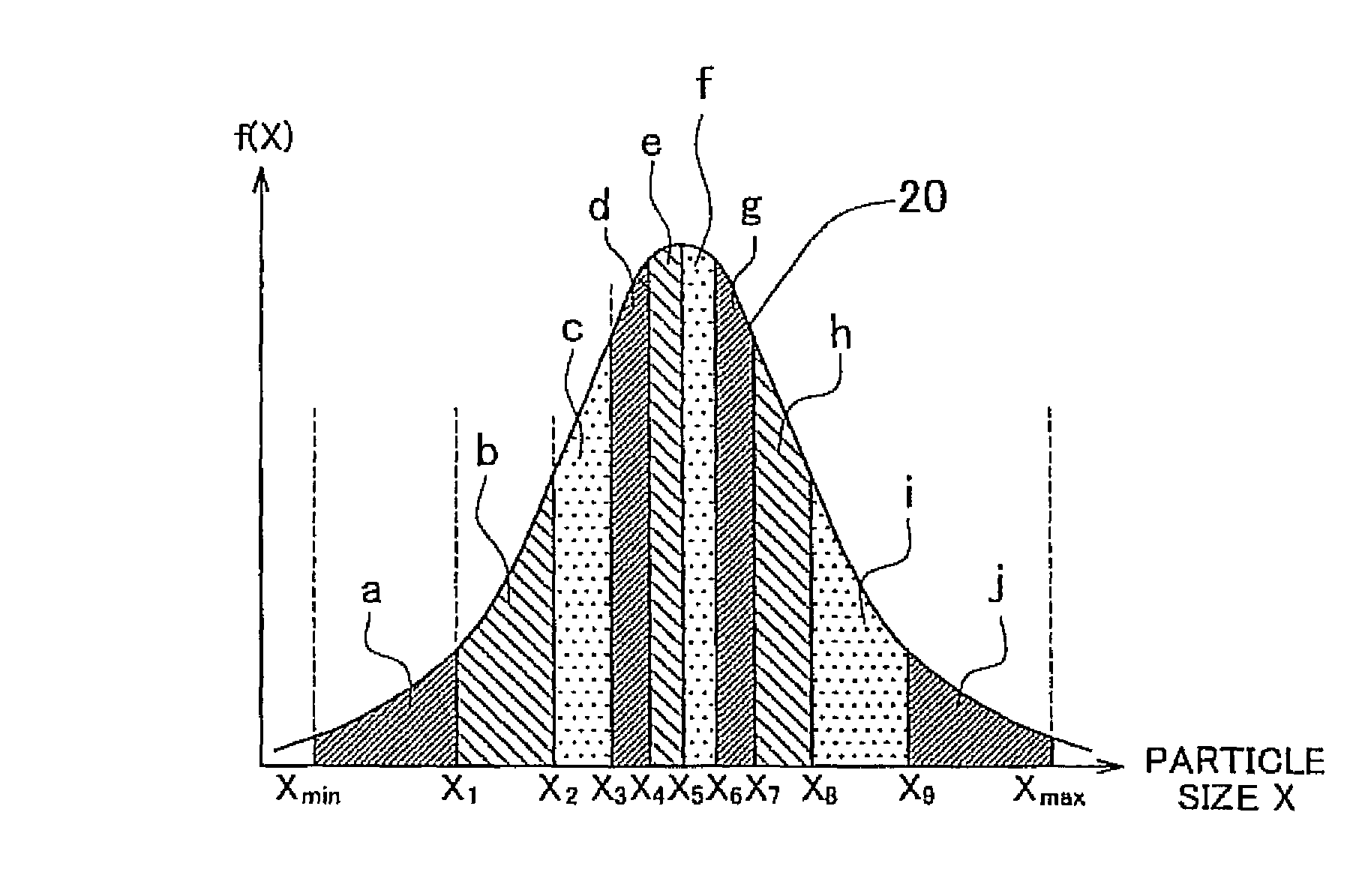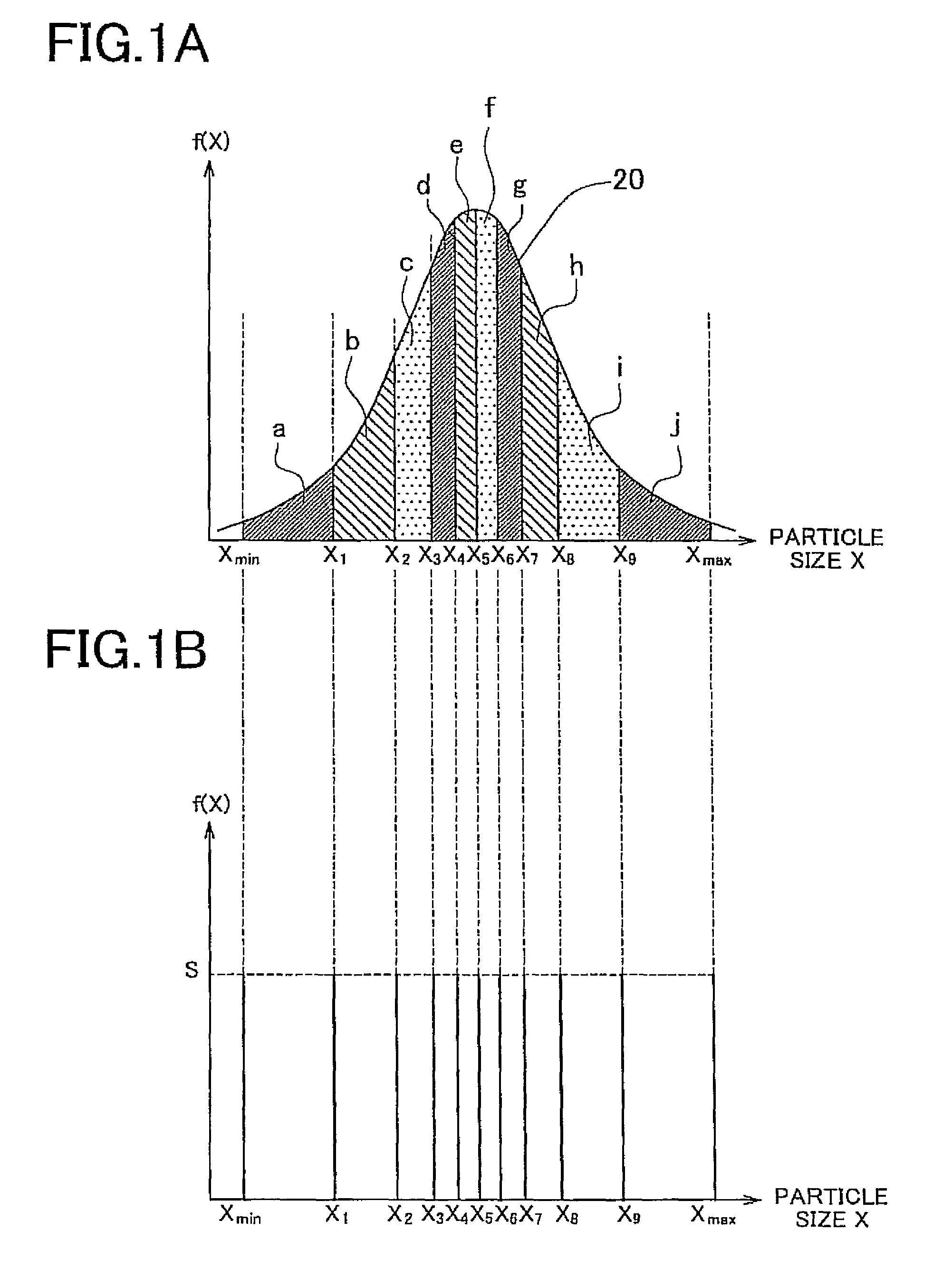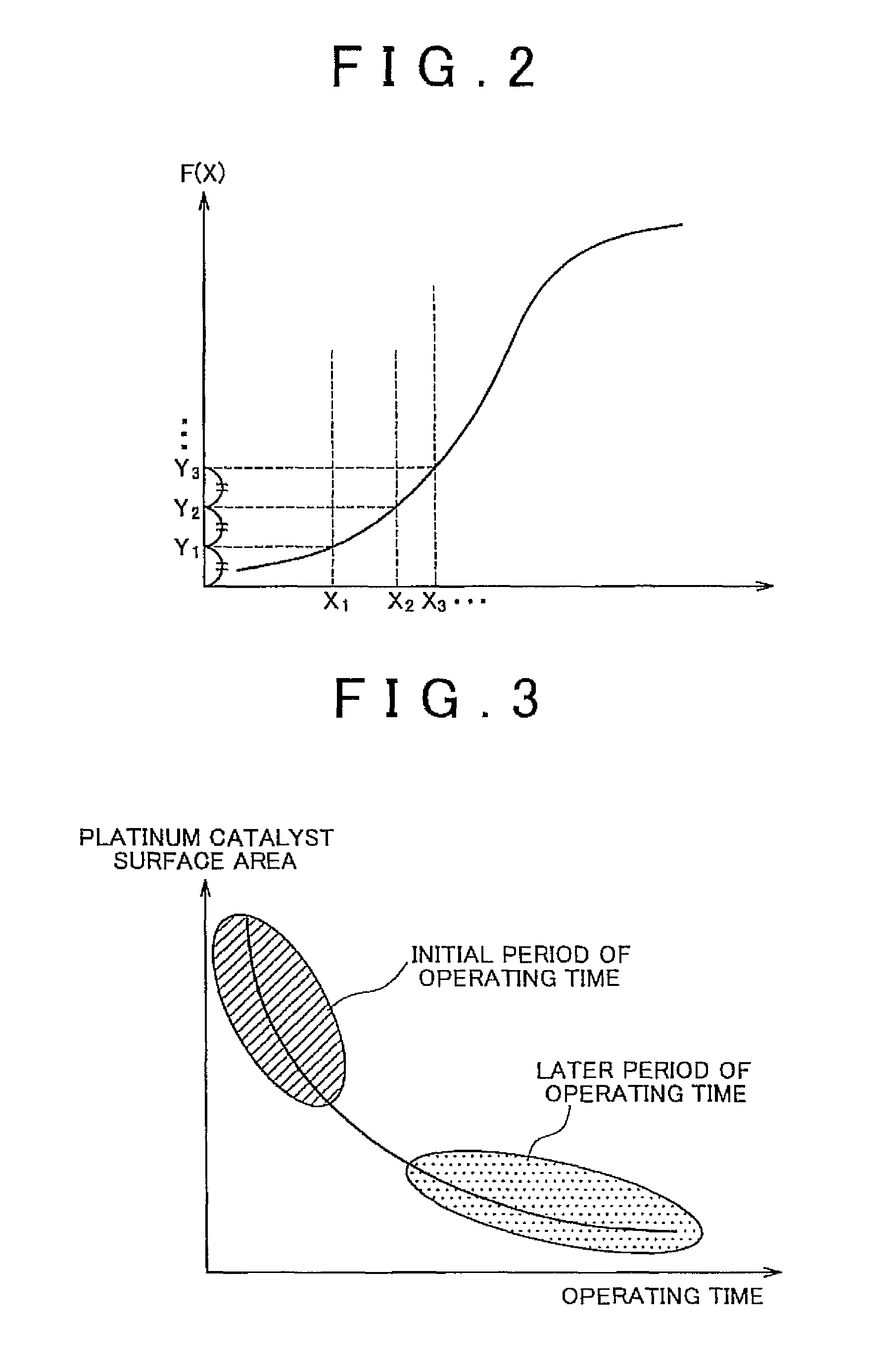Method of creating particle size distribution model, method of predicting degradation of fuel cell catalyst using the method of creating particle size distribution model, and method of controlling fuel cell using the method of predicting degradation of fuel cell catalyst
a technology of particle size distribution model and particle size distribution model, which is applied in the direction of cell components, instruments, electrochemical generators, etc., can solve the problems of not always obtaining precise simulation results that agree with experimental results, voltage reduction, etc., and achieve the effect of improving precision and reducing calculation tim
- Summary
- Abstract
- Description
- Claims
- Application Information
AI Technical Summary
Benefits of technology
Problems solved by technology
Method used
Image
Examples
Embodiment Construction
[0028]A particle size distribution model creating method of the invention, which is a method of creating a particle size distribution model that simulates a particle size distribution of a cluster of particles as a collection of a plurality of particles having different particle sizes, includes a particle size range determining step of determining the minimum particle size and maximum particle size of the particles included in the cluster of particles to be simulated, an integrating step of integrating the frequency of appearance of the particles within the particle size range determined in the particle size range determining step, over an integration region defined by the minimum particle size as a starting point and the maximum particle size as an endpoint, a division point determining step of dividing the integration region used in the integrating step into a given number of regions through a first dividing operation, using the integral of the frequency of appearance obtained in ...
PUM
 Login to View More
Login to View More Abstract
Description
Claims
Application Information
 Login to View More
Login to View More - R&D
- Intellectual Property
- Life Sciences
- Materials
- Tech Scout
- Unparalleled Data Quality
- Higher Quality Content
- 60% Fewer Hallucinations
Browse by: Latest US Patents, China's latest patents, Technical Efficacy Thesaurus, Application Domain, Technology Topic, Popular Technical Reports.
© 2025 PatSnap. All rights reserved.Legal|Privacy policy|Modern Slavery Act Transparency Statement|Sitemap|About US| Contact US: help@patsnap.com



